What is TVD (Target Value Delivery)?
A project management strategy to minimize risks for construction projects and maximize investment efficiency
Scroll Down
The rapidly shortening lifecycle of products and services is becoming a big risk for investment in building construction. Construction projects involve numerous client requests and restrictions, which results in an extremely complex business model. Due to its long duration from planning to completion to operation, investment could carry big risks in an environment where the market changes rapidly and predictions are difficult. Indeed, there are many cases in which the entire project becomes subject to reconsideration due to the rise of construction costs during the design or construction phase.
To avoid such a situation, Nikken Sekkei proposes “TVD (Target Value Delivery),” a new construction project management strategy that minimizes the risk of construction projects and maximizes investment efficiency.
CATEGORY
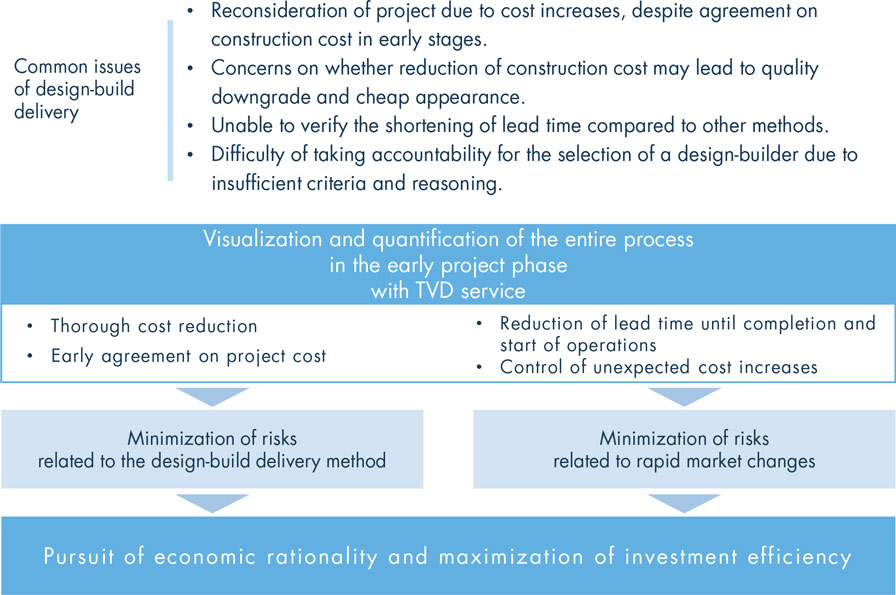
What is TVD (Target Value Delivery)?
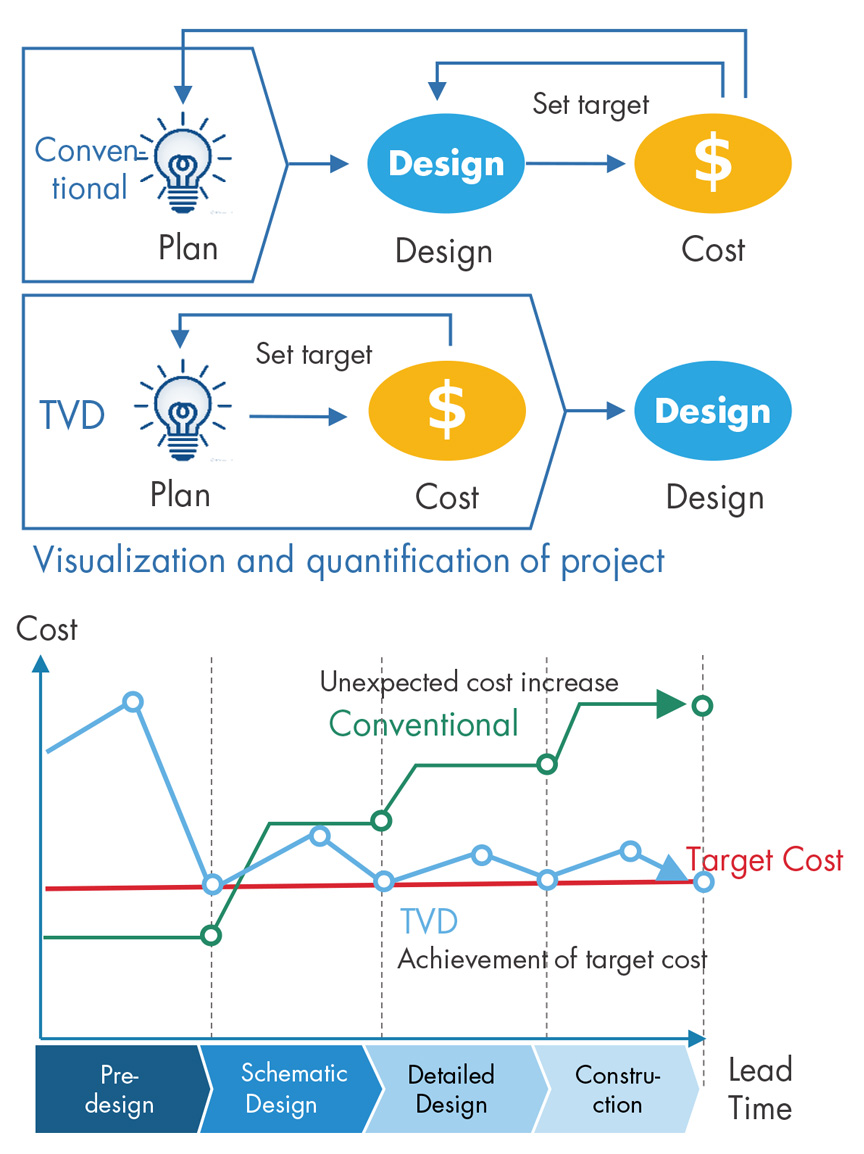
A new project management strategy originated from the target costing method of the manufacturing industry and customized for building construction projects
Supporting accurate decision-making through visualization and quantification in early stages of the project
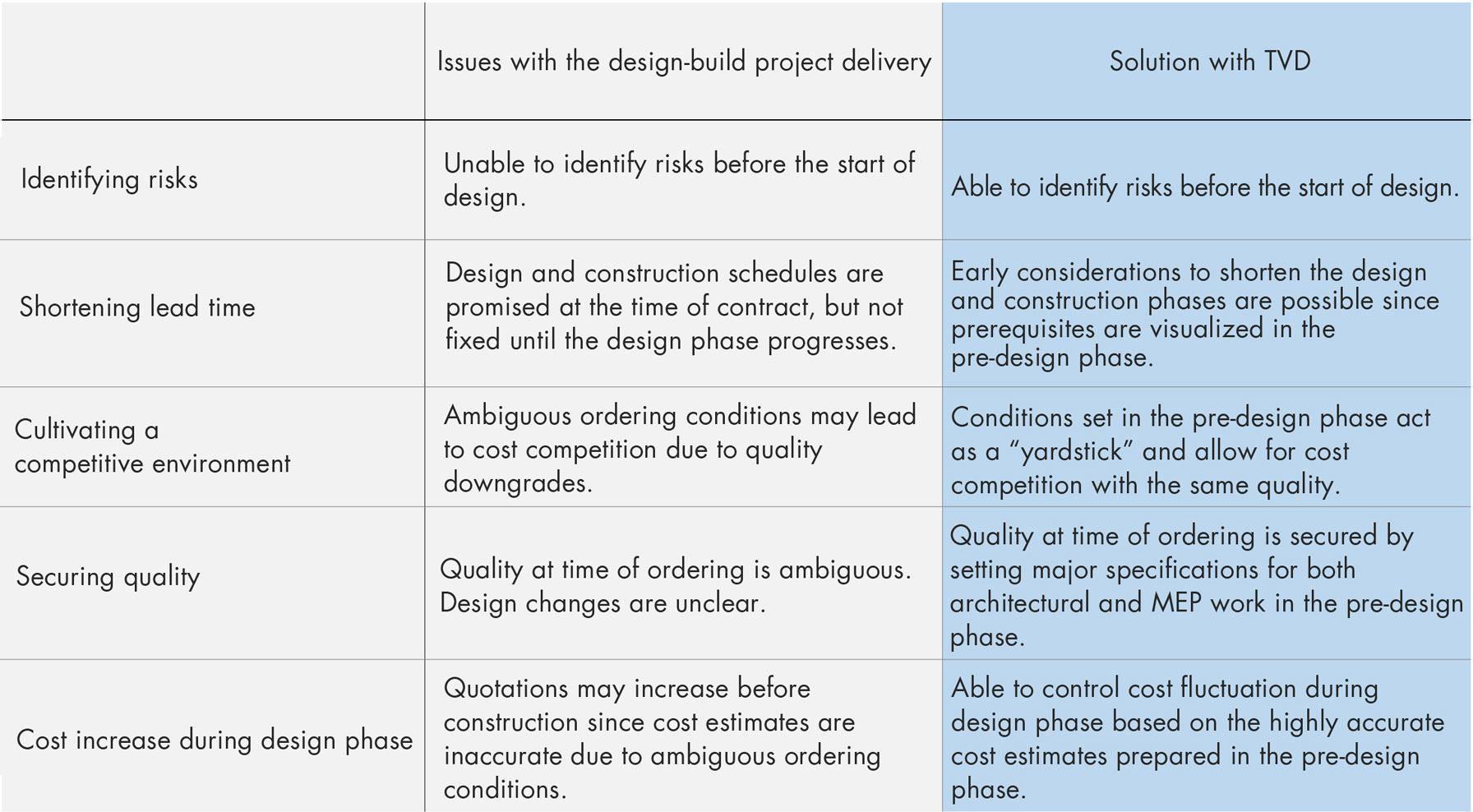
Project management flow with TVD
Roadmap of TVD services that begin in the pre-design phase
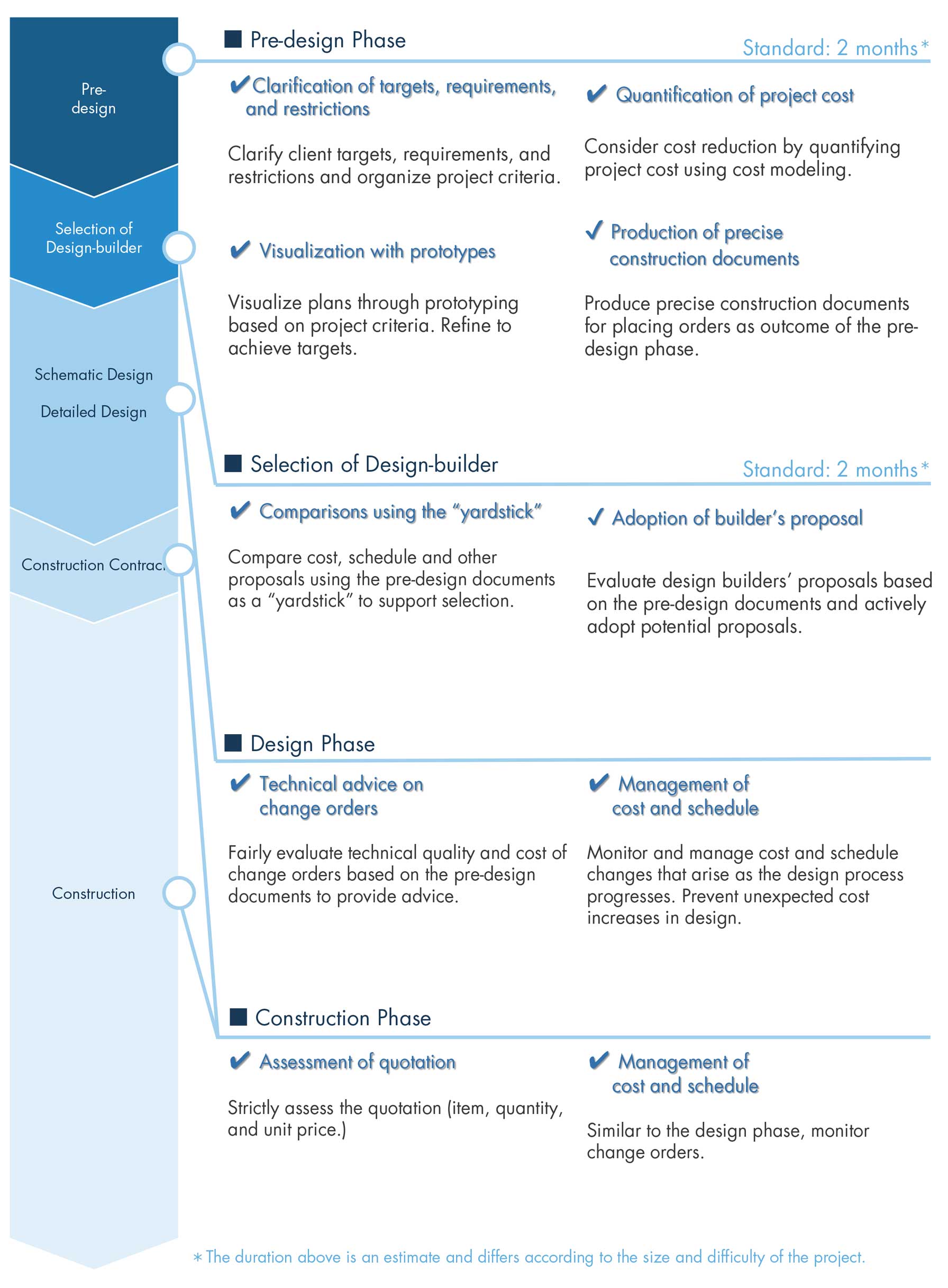
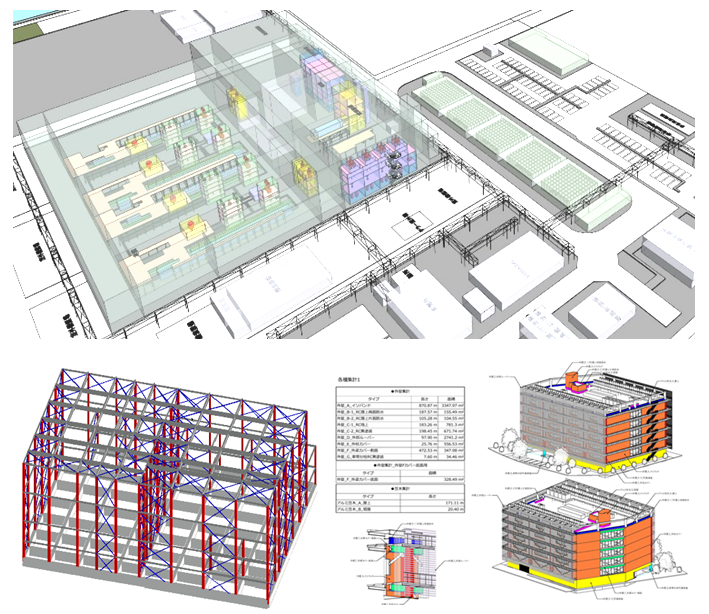
Prototyping structural and MEP performance that tends to be ambiguous in the design-build project delivery
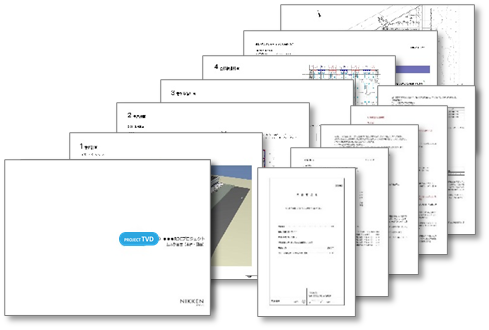
Selecting the design-builder partner from a stringent and diverse perspective
Preventing cost increases by managing changes in the design and construction phase using a “yardstick”
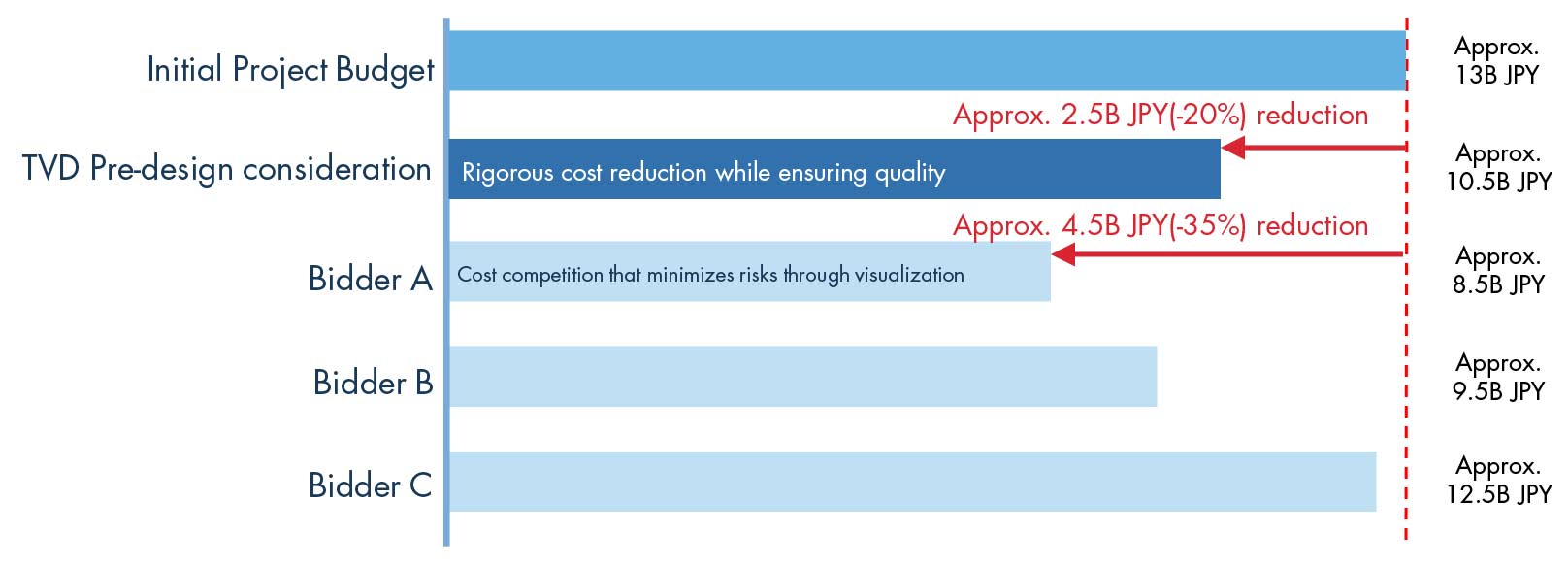
Example case of construction cost reduction
<Enlarge image>
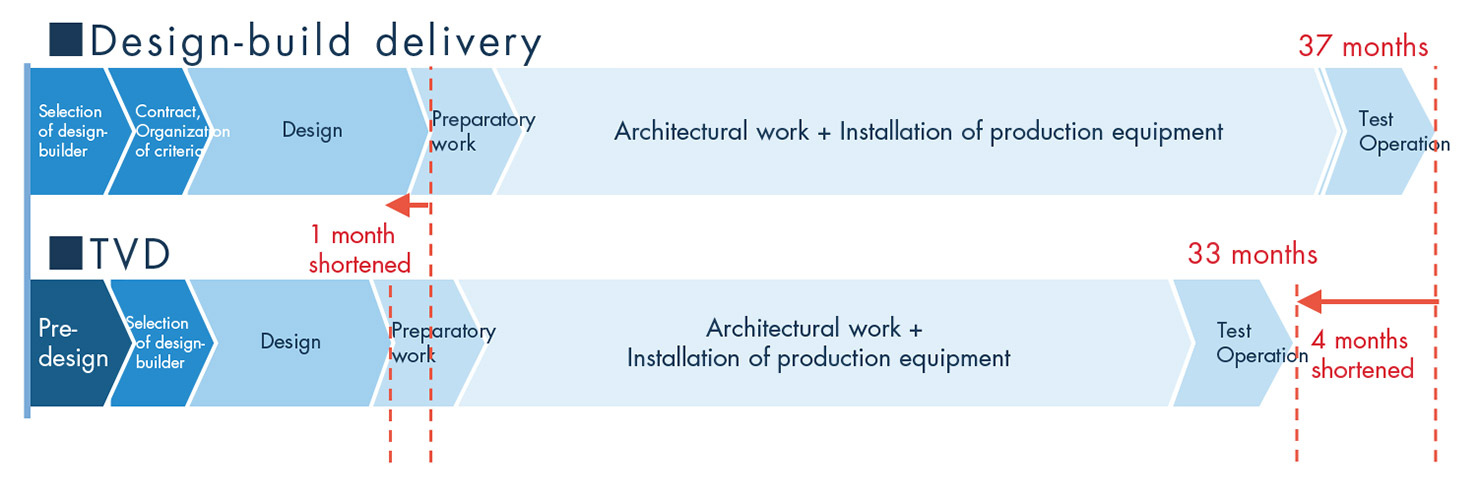
Example case of shortening lead time
<Enlarge image>
